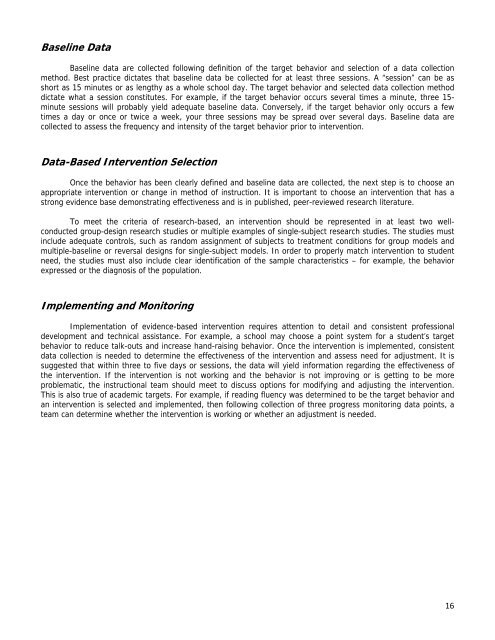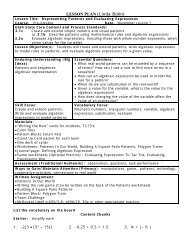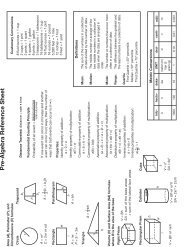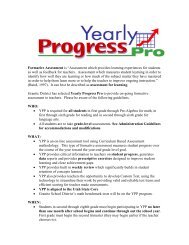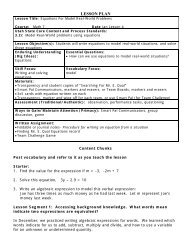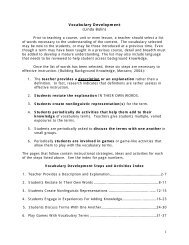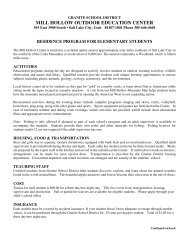Utah's Least Restrictive Behavioral Interventions Guidelines
Utah's Least Restrictive Behavioral Interventions Guidelines
Utah's Least Restrictive Behavioral Interventions Guidelines
You also want an ePaper? Increase the reach of your titles
YUMPU automatically turns print PDFs into web optimized ePapers that Google loves.
Baseline Data<br />
Baseline data are collected following definition of the target behavior and selection of a data collection<br />
method. Best practice dictates that baseline data be collected for at least three sessions. A “session” can be as<br />
short as 15 minutes or as lengthy as a whole school day. The target behavior and selected data collection method<br />
dictate what a session constitutes. For example, if the target behavior occurs several times a minute, three 15-<br />
minute sessions will probably yield adequate baseline data. Conversely, if the target behavior only occurs a few<br />
times a day or once or twice a week, your three sessions may be spread over several days. Baseline data are<br />
collected to assess the frequency and intensity of the target behavior prior to intervention.<br />
Data-Based Intervention Selection<br />
Once the behavior has been clearly defined and baseline data are collected, the next step is to choose an<br />
appropriate intervention or change in method of instruction. It is important to choose an intervention that has a<br />
strong evidence base demonstrating effectiveness and is in published, peer-reviewed research literature.<br />
To meet the criteria of research-based, an intervention should be represented in at least two wellconducted<br />
group-design research studies or multiple examples of single-subject research studies. The studies must<br />
include adequate controls, such as random assignment of subjects to treatment conditions for group models and<br />
multiple-baseline or reversal designs for single-subject models. In order to properly match intervention to student<br />
need, the studies must also include clear identification of the sample characteristics – for example, the behavior<br />
expressed or the diagnosis of the population.<br />
Implementing and Monitoring<br />
Implementation of evidence-based intervention requires attention to detail and consistent professional<br />
development and technical assistance. For example, a school may choose a point system for a student’s target<br />
behavior to reduce talk-outs and increase hand-raising behavior. Once the intervention is implemented, consistent<br />
data collection is needed to determine the effectiveness of the intervention and assess need for adjustment. It is<br />
suggested that within three to five days or sessions, the data will yield information regarding the effectiveness of<br />
the intervention. If the intervention is not working and the behavior is not improving or is getting to be more<br />
problematic, the instructional team should meet to discuss options for modifying and adjusting the intervention.<br />
This is also true of academic targets. For example, if reading fluency was determined to be the target behavior and<br />
an intervention is selected and implemented, then following collection of three progress monitoring data points, a<br />
team can determine whether the intervention is working or whether an adjustment is needed.<br />
16


